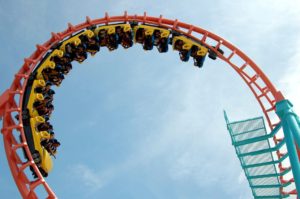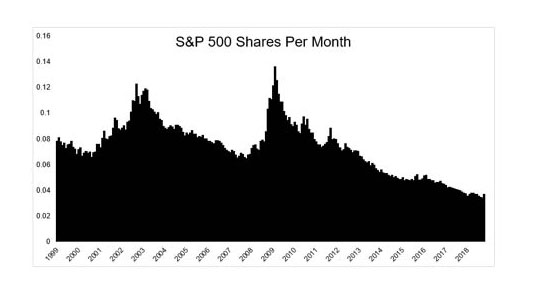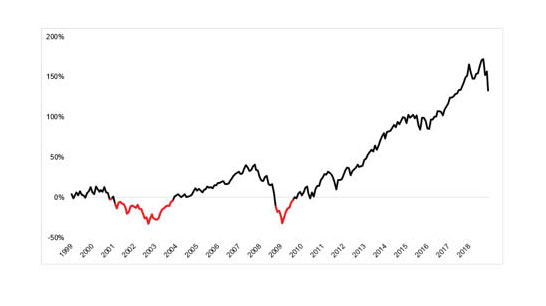What’s the Best Strategy for Navigating Choppy Markets?
What’s the best strategy for navigating choppy investment markets?
The classic advice is to hang on for dear life. But is there a better option?
Taming the Roller Coaster
 A recent article by Michael Batnick of Rithold Wealth Management helpfully
A recent article by Michael Batnick of Rithold Wealth Management helpfully
reminds us that we have experienced two VERY choppy market periods since
1999. Buy and hold worked decently, but not terrifically, during that time. If
somebody had invested $10,000 in the S&P 500 in 1999 and held on through the
dot-com crash and the Great Recession, he or she would have $29,800 today.
But somebody who invested according to the principles of dollar-cost averaging
would actually have had a better investing experience. The accompanying chart
shows how many shares a person would have purchased, each month, with a $100
a month investment in the S&P 500. During the two major market downturns,
Investor X is buying twice as many shares, at times when stocks are selling at a
discount, than more recently, when stocks have become rather pricey.

Don’t Loose
Of course, it takes courage go buy when everybody else is selling. Don’t you lose
money on your investment when you buy stocks and the market goes down that
month? And the next? Of course you do. The next chart shows, in red, the times
when your steady contributions result in temporary losses, and it also shows what
happened, long-term, for someone who followed through on the strategy.
The bottom line: that buy and hold investor would have earned an average yearly
return of 5.6% a year through two terrible bear markets and the long bull market
the followed it. The investor who dollar-cost averaged through these extremely
choppy markets would have earned 7.9% a year.
Conclusion
There is, of course, no guarantee that this or any strategy will beat the buy and hold
investor’s returns. Dollar-cost averaging happens to be a terrific way to navigate
especially choppy markets, where stocks are available at an extreme discount once
or twice along the way.
Source:





